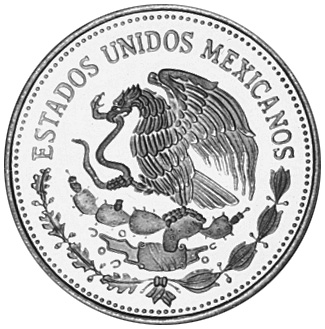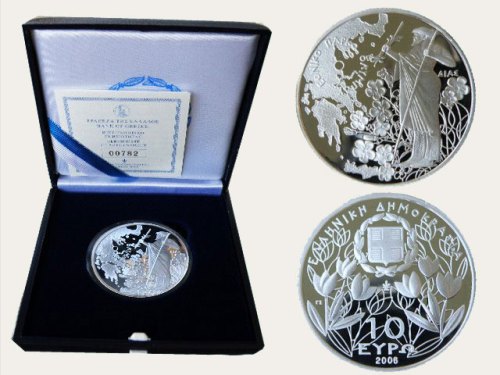This 1985 Mexican 25 Peso ¼ oz “World Cup” Proof Silver Coin was part of a series of commemorative coins celebrating Mexico’s hosting of the 1986 World Cup. This coin was also offered as Proof in 1986 individually and as part of a set. This coin contains 1/4 oz of silver and comes with the official 1986 World Cup logo.
Tag Archive: Commemorative
A new €50 World Design Capital Helsinki coin has been released by Mint of Finland during World Money Fair in Berlin. The 50 euros gold and silver coin minted to commemorate Helsinki as a 2012 World Design Capital awarded by International Council of Societies of Industrial Design. Only 5,000 pieces of this coins are minted by the Mint and it came with a beautiful gift package. The collector coin marking this momentous year has been designed by the designer Henna Lamberg. A 5 euro Aluminium-Bronze metal coin with the same design also has been released.

On the obverse show alternative smooth and uneven surfaces including triangular and peaked effects that give it a distinctive look and tactile attributes resulting in a three-dimensional appearance. The text on the coin reads “WORLD DESIGN CAPITAL HELSINKI 2012” and is placed around the inner disc which is off-center. The Mint’s logo appears towards the end of the legend.
Technical Specifications:
Nominal value: 50 €
Metal: Ag 925/Au 750
Diameter: 27,25 mm
Weight: 10,8 g
Mintage: 5000
Designer: Henna Lamberg
Issue date: 3.2.2012
Year: 2012
Quality: Proof
Price: 430.00 €
If you’re interested on buying the coin, you can visit Mint of Finland at www.suomenrahapaja.fi.
Article Taken By: http://lunaticg.blogspot.com/2012/02/50-world-design-capital-helsinki-coin.html#ixzz1lphWQOBA
Mint – Athens National Mint
Mint – Athens National Mint
Mint – Athens National Mint
Mint – Rahapaja Oy, in Helsinki-Vantaa, Finland
On the left under the plant, its name ‘HLADNIKIA PASTINACIFOLIA’ is written in an arc.
Around the image in a circle is the legend ‘SLOVENIJA 2010. 200 LET. BOTANIČNI VRT. LJUBLJANA.’
The outer ring of the coin depicts the 12 stars of the European flag.
Value – 3,40 euros http://www.fleur-de-coin.com/eurocoins/slovenia-2-euro-coins.asp
Mint – Rahapaja Oy, in Helsinki-Vantaa, Finland
Mint – Lisbon (Imprensa Nacional – Casa da Moeda)
In February 2012 Slovakia will issue the first blister for 2012 including apart from the 8 regular euro coins, the common european commemorative 2 euro coin, celebrating 10 years of eurocoins circulation. The price is unknown at the time (an estimate is 20 euros) but the tirage will be 6.000 pieces !!!!!!!!!!














